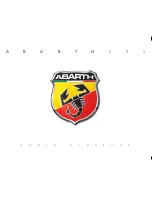
WHEELS AND TIRES
}}
465
Checking tire inflation pressure
Correct tire inflation pressure helps improve driv-
ing stability, save fuel and increase the service
life of the tires.
WARNING
•
Under-inflation is the most common
cause of tire failure and may result in
severe tire cracking, tread separation, or
"blow-out," with unexpected loss of vehi-
cle control and increased risk of injury.
•
Under-inflated tires reduce the load car-
rying capacity of your vehicle.
Cold tires
Inflation pressure should be checked when the
tires are cold.
The tires are considered to be cold when
they have the same temperature as the sur-
rounding (ambient) air.
This temperature is normally reached after the
vehicle has been parked for at least 3 hours.
After driving a distance of approximately 1 mile
(1.6 km), the tires are considered to be hot. If you
have to drive farther than this distance to pump
your tire(s), check and record the tire pressure
first and add the appropriate air pressure when
you get to the pump.
When weather temperature changes occur, tire
inflation pressures also change. A 10-degree
temperature drop causes a corresponding drop
of 1 psi (7 kPa) in inflation pressure. Check your
tire pressures frequently and adjust them to the
proper pressure, which can be found on the vehi-
cle's tire information placard or certification label.
If checking tire pressure when the tire is hot,
never "bleed" or reduce air pressure. The tires
are hot from driving and it is normal for pressures
to increase above recommended cold pressures.
A hot tire at or below recommended cold inflation
pressure could be significantly under-inflated.
Recommended inflation pressures
Tire inflation placard
A tire inflation pressure placard is located on the
driver's side B-pillar (the structural member at the
side of the vehicle, at the rear of the driver's door
opening). This placard indicates the designation
of the factory-mounted tires on your vehicle, as
well as load limits and inflation pressure.
•
The placard shown indicates inflation
pressure for the tires installed on the
vehicle at the factory only.
•
A certain amount of air seepage from the
tires occurs naturally and tire pressure
fluctuates with seasonal changes in tem-
perature. Always check tire pressure reg-
ularly.
•
Use a tire gauge to check the tire inflation
pressure, including the spare
3
, at least once
a month and before long trips. You are
strongly urged to buy a reliable tire pressure
gauge, as automatic service station gauges
may be inaccurate.
•
Use the recommended cold inflation pres-
sure for optimum tire performance and wear.
•
Under-inflation or over-inflation may cause
uneven treadwear patterns.
3
Not available in all models.
Содержание S 90 2017
Страница 1: ...OWNER S MANUAL ...
Страница 2: ......
Страница 14: ......
Страница 15: ...INTRODUCTION ...
Страница 58: ......
Страница 59: ...SAFETY ...
Страница 96: ......
Страница 97: ...INSTRUMENTS AND CONTROLS ...
Страница 182: ......
Страница 183: ...CLIMATE ...
Страница 208: ......
Страница 209: ...LOADING AND STORAGE ...
Страница 225: ...LOADING AND STORAGE 223 Load anchoring eyelets p 216 Loading p 214 ...
Страница 226: ......
Страница 227: ...LOCKS AND ALARM ...
Страница 253: ...DRIVER SUPPORT ...
Страница 365: ...STARTING AND DRIVING ...
Страница 412: ......
Страница 413: ...INFOTAINMENT ...
Страница 462: ......
Страница 463: ...WHEELS AND TIRES ...
Страница 492: ......
Страница 493: ...MAINTENANCE AND SERVICING ...
Страница 529: ...MAINTENANCE AND SERVICING 527 ...
Страница 543: ...SPECIFICATIONS ...
Страница 545: ...SPECIFICATIONS 543 Location of labels Generic illustration details may vary slightly depending on model market ...
Страница 547: ...SPECIFICATIONS 545 Dimensions The following table lists your vehicle s most important dimensions ...
Страница 553: ...SPECIFICATIONS 551 Related information Engine oil specifications and volume p 552 Coolant specifications p 552 ...
Страница 558: ......
Страница 569: ......
Страница 570: ...TP 23148 English USA Canada AT 1717 MY18 Copyright 2000 2017 Volvo Car Corporation ...
















































